Learning Team IV Genre Presentation(2)
advertisement
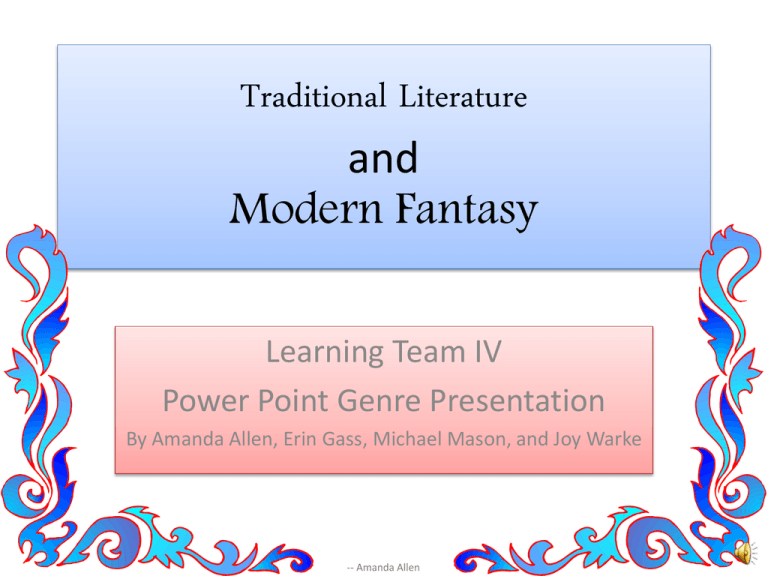
Traditional Literature and Modern Fantasy Learning Team IV Power Point Genre Presentation By Amanda Allen, Erin Gass, Michael Mason, and Joy Warke -- Amanda Allen Modern Fantasy Modern fantasy has developed from traditional literature. Whereas traditional literature comes from a basis of fact, modern fantasy is all about out-of-the-box fiction from the get-go. Some categories of modern fantasy include: • Articulate Animals • Toys • Preposterous Characters and Situations • Strange and Curious Worlds • Spirits Friendly and Frightening • Little People • Time Warps • Science Fiction -- Joy Warke Modern Fantasy: Time Warp The Time Garden by Edward Eager Time Warp is just one of the categories in modern fantasy. This category “encourages children to consider what might have happened in their own towns…hundreds of years ago, as well as what the future might hold in centuries to come.” (Norton, 2011, p. 287) Many people think about what they could have or would have done in the past, as well as what they will do in the future. Literature about time warps lets children escape to where that is possible. This form of literature focuses more on how one can change themselves to better the present. Time Warp Trio is another good example of this category. The Time Garden is a great book by Edward Eager, that gets children’s interests sparking. This fun filled book is about four children who get to stay with Mrs. Whiton, an older great-aunt, while their parents are away on trips. Eliza and Jack, who are brother and sister, are cousins with Ann and Roger, who happen to be brother and sister. Eliza, Jack , and Ann venture out on the grounds and find themselves in a magical time warp. The Natterjack, a magical toad, and all the thyme allow the children to wish where they want to be and it happen, while Roger flirts with the girls in town. These three have many action packed ventures in the past, while staying right in the back yard, well most of the thyme. -Erin Gass Modern Fantasy: Little People The Littles and the Terrible Tiny Kid by John Peterson “Contemporary authors of fantasy satisfy children’s fascination with people who are a lot like them, only much smaller.” (Norton, 2011. p.284) This category, little people, includes all people or people like creatures that act and look like people. These people may live in their own world or in our world with us. The Littles and the Terrible Tiny Kid by John Peterson is about a family of little people who live in the Bigg's house. One day two young little people, Midge and Chip, found their way into the Bigg house and it was up to the Little family to figure out how to get these two home. There is many exciting adventures that happen along the way to Midge and Chip’s house. This fun and excitement will keep readers of all ages wanting to get to the end. -Erin Gass Modern Fantasy: Strange and Curious worlds Jack Sparrow: The Siren Song The category of strange and curious worlds is a great way to get children to fall into the book. This is a great book type that can keep children entranced in what they are reading. Many children not only read the book but let their imaginations run and can visualize the world around them. Jack Sparrow: The Sirens Song by Rob Kidd is a fun filled action adventure that follows a young Jack Sparrow and his problems. While on a journey to find the magical Sword of Cortez and its holder, infamous pirate Left-Foot-Louis, Jack’s crew falls under a very powerful spell that makes them try to keep the ship off course. Jack is then forced to the lair of the mermaids and has to fight his way out with the help of one, Sirena, who gives him a special compass, the Scabbard, that points him in the right directions he needs to find the sword. -Erin Gass Modern Fantasy: Redwall by Brian Jacques “A fantasy is a story based on and controlled by an overt violation of what is generally accepted as possibility; it is the narrative result of transforming the condition contrary to fact into “fact” itself (Jackson, 1981, p.14). One category of modern fantasy is Articulate Animals. These animals wear clothes, think, talk and have many human characteristics, along with their normal animal traits. This is a category many children’s authors have had a lot of fun with! Brian Jacque’s Redwall focuses on a war between evil rats and good mice, badgers, hedgehogs, otters, moles, squirrels, etc.. Matthias, a young clumsy mouse, is the main character in this epic tale full of quests, riddles, prophesies, war, friendships, and the development of warriors. “All of Jacque’s books have strong characters that reveal the best or the worst of animalkind” (Norton, 2011, p. 278). This book will keep you spellbound until the end! --Joy Warke Modern Fantasy The Velveteen Rabbit by Margery Williams “It was not until the twentieth century…that writing for children really came into its own, and many of the best children’s stories are fantasies” (Rottensteiner, 1978, p.112). Another category of modern fantasy is Toys, where the point of view of a personified toy, “encourages young readers to draw on their imaginative experiences with toys and to suspend their disbelief” (Norton, 2011, p.280). Most children grow up personifying their stuffed animals and toys. Using toys as main characters, therefore, is a natural avenue for authors of children. Some of the most heart-warming books for kids are found in this category of modern fiction. The Velveteen Rabbit is a bittersweet tale of a toy rabbit who longs to be ‘real’, which is described as what happens when a toy is deeply loved to the point of falling apart. This actually happens to the toy rabbit, and is a great delight to him as he loves and is loved by a boy. When the boy becomes sick with scarlet fever, however, the rabbit is thrown out with the trash. Thankfully, he is not forgotten by the nursery magic Fairy! --Joy Warke Modern Fantasy: Raising Dragons by Bryan Davis “Fantasy in literature depends on a peculiar, unexpected mingling of internal and external reality”(Apter, 1982, p.25). Preposterous Characters and Situations is another category of modern fantasy. Authors must enjoy the freedom to invent and create anything, attempting to make it believable. Often trilogies evolve from these types of stories, with many interwoven parts and adventures. Raising Dragons is a book centering on two kids who are half-dragon, half human. A boy that can breathe fire, a girl that has dragon wings…how can this be? And yet it seems to work in this action-packed book. Sinister ‘slayers’ are out to end the endangered dragon population, Billy and Bonnie included. The humor from some of the outlandish situations make one laugh, and fear from the near-death exploits keep the reader on the edge of their seats! Bryan Davis weaves in riddles of Merlin from the days of King Arthur into this unusual tale. Davis also brings struggles of Christian children into the story as well. This is a harrowing tale, put together with so much imagination, it will make one’s head spin! --Joy Warke Traditional Literature Traditional Literature is literary work that details stories from cultures around the world and “today, folk literature is considered an important part of every child’s cultural heritage” (Norton p. 205). Some categories of traditional literature include: • Folktales • Fables • Myths • Legends -- Amanda Allen Traditional Literature: Glass Slipper, Gold Sandal: A Worldwide Cinderella by Paul Fleischman “Because folktales differ from other types of literature, they have characteristics related to plot, characterization, setting, theme, and style that may differ from other types of children’s stories,” (Norton, p. 213). One category of traditional literature is Folktales. Many folktales each share similar characteristics within the story, but they differ in cultural styles and portray the customs and traditions from all over the world as they are rewritten. The timeless tale is of a woman left in the care of her cruel step-mother after the death of her beloved father. After sneaking in to a ball, she comes face to face with her prince charming, but upon the two falling in love after only a moment she leaves him with nothing but a shoe. Thus, his search begins to find the woman whose foot fits the shoe, and fulfills his heart’s desire. Newberry Award-winning writer Paul Fleischman pens a new adaptation of the traditional story of Cinderella. “He uses the ubiquity of the story across cultures to weave an enchanting tapestry of a tale that is familiar and new at the same time,” (Brozio-Andrews). --Amanda Allen Traditional Literature: The story of the mighty Lion and a Aesop’s Fables: The Lion and simple mouse is a the Mouse quaint lesson in being Another category of humble despite your traditional literature is greatness, and to Fables, or stories “in which animal characters that talk appreciate everyone, and act like humans teach a despite their seeming moral lesson or satirize insignificance. This human conduct” (Norton, 2011, p.207). These types of Lion allows a mouse, tales are simple yet effective whom he deemed a analogies of life that remind nuisance, to go free after being assured by the us all that we should be mouse that his kindness would be repaid. The aware of how we treat Lion laughs off this mere mouse’s offer, only to be others, and to affect all grateful of his assistance a short time later when people with humility and the mouse frees him from the traps of hunters. kindness. -- Amanda Allen Traditional Literature: Eragon by Christopher Paolini Another category of traditional literature is Legends. These writers create a believable world loosely based on historical facts intermingled with fictitious circumstances and characters that often leave the audience inspired and empowered. This first book of a four part series is the epic tale of Eragon, a poor farm boy, who finds what he thinks is a blue stone that may save his family from starvation. His life is upended when then stone produces a dragon named Saphira who has been waiting to hatch until she encounters her fated rider. Eragon soon realizes that he is now a part of a legacy as “he is thrust into a perilous new world of destiny, magic, and power” (aleglaesia.com). The young Paolini continues his story that allows Eragon and Saphira to “embark on a journey of escape and revenge, and along the way meet up with a wise magician, elves, dwarves, and several beautiful maidens” (notablebiographies.com). --Amanda Allen Traditional Literature Overview Traditional literature is the term used to describe various forms of folklore stories that come from the oral tradition. They do not have a known originating author, but have been collected and retold by people like the Grimm Brothers. Traditional literature includes folktales, mythology, legends, tall tales, folk songs, nursery rhymes, and fairy tales. Fairy tales by known originating authors, such as those by Hans Christian Andersen, are not traditional literature. Folklore may appear as a single illustrated story in a picture book format or a number of stories may be accumulated into a collection. Michael Mason Traditional Literature Books * Felton, Harold W. (1989). Pecos Bill: The Cyclone. Englewood Cliffs, New Jersey: Prentice Hall, ISBN 0-13-698523-8 * Sandburg, Carl (1989). Paul Bunyan of the North Woods. Englewood Cliffs, New Jersey: Prentice Hall, ISBN 0-13698523-8 * Stoutenburg, Adrien (1989). Hammerman. Englewood Cliffs, New Jersey: Prentice Hall, ISBN 0-13-698523-8 Michael Mason Interesting Facts of Traditional Literature Paul Bunyan of the North Woods is about a legendary frontiersman, a gigantic lumberjack, known for his tremendous strength and fantastic logging adventures. According to folklore, Paul Bunyan invented the idea of logging in the Pacific Northwest, and he created the Great Lakes to provide drinking water for his blue ox, Babe. Pecos Bill: The Cyclone is about a legendary American cowboy. The tales tell that Pecos Bill was born in Texas in the 1830’s. He is credited with the invention of branding, roping, and the six-shooter. It is also said that he taught broncos how to buck. One of the most famous tales about Pecos Bill tells of the time he rode a cyclone in Oklahoma. Hammerman was the nickname for a black laborer named John Henry who in the early 1870’s helped construct the Big Bend Tunnel along the Chesapeake and Ohio Railroad in West Virginia. At the time, the workers used long-handled hammers to pound steel drills into rocks. One day a man arrived with a steam-powered drill, which he claimed could drill holes faster that twenty men using hammers. Michael Mason Relevant Information of Traditional Literature There are sub-genres that make up traditional literature. These sub genres are: * Animal Stories: Deals with anthropomorphism – ex. The Three bears. * Trickster Tales: The story involves someone who gets others in trouble – ex. Brer Rabbit . * Pourquoi Tales: The story explains why something happens – ex. Why Mosquitoes Buzz in People’s Ears. * Tall Tales: Highly exaggerated stories, typical American tales – ex. Paul Bunyan and Babe. * Cumulative Tales: Composed of repeated lines and additional lines – ex. There was an Old Lady Who Swallowed a Fly. * Fairytales: Magical stories – ex. Cinderella. * Numbskull or Droll Tales: Stories of fools and idiots – ex. The Three Sillies. * Folktales: Folktales are tied to and reflect a particular culture- ex. The Little Mermaid (Scandinavian). * Fables: A form of animal tale in which animals portray human virtues and vices to convey a moral message – ex. Aesop. * Ghost Stories: An example of a living folktale, told from person to person with each telling adapted to the occasion- ex. Urban Legends. * Myths: Stories of gods, goddesses, and heroes of a given culture- ex. Greek myths. * Epics and Heroic Legends: Grew out of mythology, but humans became the heroes – ex. Odyssey. * Saint’s Lives and Local Legends: Recounting of apocryphal tales of the lives and miracles of saints – ex. George Washington’s Cherry Tree. Michael Mason Traditional Literature and Modern Fantasy These stories are used throughout the education of students for invaluable lessons of the English language, grammar, and reading skills, as well as introducing culture, morals and ethics to children. -- Amanda Allen Our Book List Amanda: Glass Slipper, Gold Sandal: The Worldwide Cinderella by Paul Fleischman Aesop’s Fables: The Lion and the Mouse Eragon by Christopher Paolini Erin: The Littles and the Terrible Tiny Kid by John Peterson The Time Garden by Edward Eager Jack Sparrow: The Siren Song by Rob Kidd Joy: The Velveteen Rabbit by Margery Williams Redwall by Brian Jacques Raising Dragons by Bryan Davis Michael: Paul Bunyan and the North Woods by Carl Sandburg Pecos Bill: The Cyclone by Harold W. Felton Hammerman by Adrien Stoutenburg Joy Warke Reference: Michael Mason’s • Felton, Harold W. (1989). Pecos Bill: The Cyclone. Englewood Cliffs, New Jersey: Prentice Hall, ISBN 0-13698523-8 • Norton, Donna & Norton, Saundra (2011). Through the eyes of a child: An introduction to children's literature (8th ed.). Upper Saddle River, NJ: Merrill Prentice Hall, ISBN 0-137-02875X • Sandburg, Carl (1989). Paul Bunyan of the North Woods. Englewood Cliffs, New Jersey: Prentice Hall, ISBN 0-13-698523-8 • Stoutenburg, Adrien (1989). Hammerman. Englewood Cliffs, New Jersey: Prentice Hall, ISBN 0-13698523-8 • http://web.gccaz.edu/~rbarstac/291Fall08/TradLit/TradLit1a.htm Joy Warke's •Apter, T.E. (1982). Fantasy literature: An approach to reality. Bloomington, IN: Indiana University Press. •Norton, Donna & Norton, Saundra (2011). Through the eyes of a child: An introduction to children's literature (8th ed.). Upper Saddle River, NJ: Merrill Prentice Hall. •Jackson, Rosemary (1981). Fantasy: The literature of subversion. NewYork, NY: Mehuen & Co. •Rottensteiner, Franz (1978). The fantasy book: An illustrated history from dracula to tolkein. New York, NY: Macmillian Publishing Co., Inc. -Erin Gass Reference: • Erin Gass’s Eager, E., 1958. The Time Garden. New York, NY: Harcourt Children's Books. • Kidd, R., 2006. Jack Sparrow: The Siren Song. New York, NY: Disney Press. • Norton, Donna & Norton, Saundra (2011). Through the eyes of a child: An introduction to children's literature (8th ed.). Upper Saddle River, NJ: Merrill Prentice Hall • Peterson, J., 1993. The Littles and the Terrible Tiny Kid. New York, NY. Scholastic Inc. • Amanda Allen’s Norton, Donna & Norton, Saundra (2011). Through the eyes of a child: An introduction to children's literature (8th ed.). Upper Saddle River, NJ: Merrill Prentice Hall. • Brozio-Andrews, Amy (2011). Book Review of Glass Slipper, Gold Sandal: The Worldwide Cinderella. In The Imperfect Parent. Retrieved April 13, 2011. http://www.imperfectparent.com/books/articles550_1.php • Long, John (1997-2011). The Lion and The Mouse. Aesop’s Fables Online Collection. Retrieved April 12, 2011. http://aesopfables.com/cgi/aesop1.cgi?3&TheLionandtheMouse&lionmouse.jpg • Unkown (nd). Review of Eragon. Alegaesia.com. Retrieved April 12, 2011. http://www.alagaesia.com/eragon.htm • Unknown (2011). Biography of Christopher Paolini. Encyclopedia of World Biography. Retrieved April 12, 2011. http://www.notablebiographies.com/news/Ow-Sh/Paolini-Christopher.html -Erin Gass
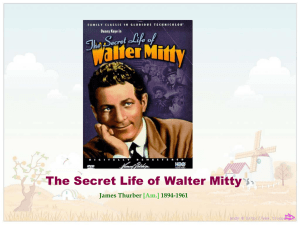
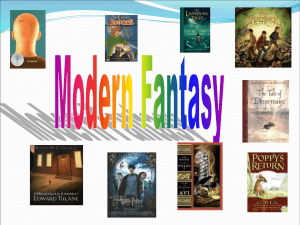
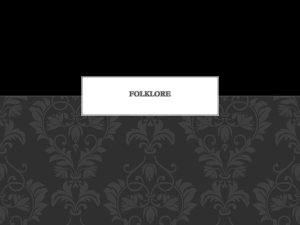

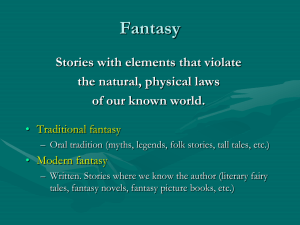
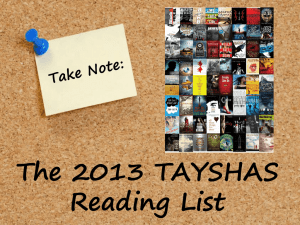
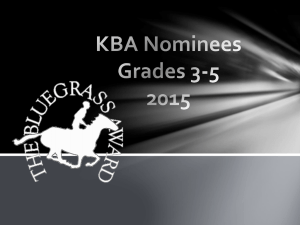
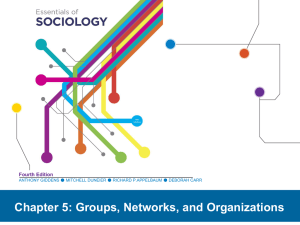
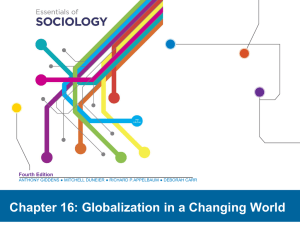
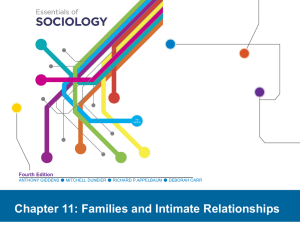
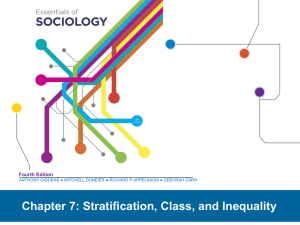
![Book_Talk[1].](http://s2.studylib.net/store/data/005217976_1-0ea20098832beae7d5526434ef6c929e-300x300.png)